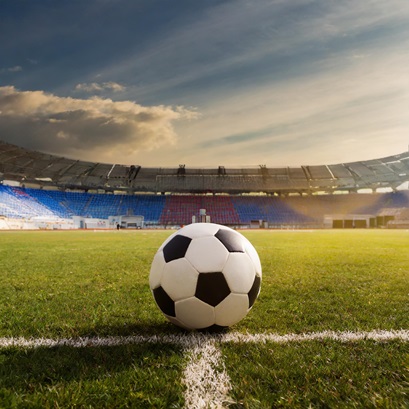The upcoming Paris Olympics is a stage for extraordinary tales of resilience, determination, and triumph.
Outside of the Olympics, there are myriads of inspiring stories, including one involving Tai Chi: a professional soccer player’s journey from being sidelined by sport-related dystonia to making a remarkable comeback, thanks to an innovative rehabilitation approach that integrated Tai Chi.

The Challenge of Sport-Related Dystonia
Sport-related dystonia is a rare and debilitating condition that affects an athlete’s ability to perform specific activities. For a 24-year-old Italian male professional soccer player, this condition manifested as severe rigidity and dystonia in his right lower extremity, particularly his ankle and foot.
The symptoms began subtly over a year before he sought help, starting with stiffness during soccer games and progressively worsening to affect his normal walking. By the time he arrived at the outpatient clinic, he could barely run and struggled to walk, relying on the outside of his right foot for support.
Traditional treatments had failed to alleviate his condition, leaving his athletic career in jeopardy.
The Integrated Rehabilitation Approach
Faced with this challenging case, the medical team formed between a Rehabilitation Center in Merate, Italy and a clinic in Lugano, Switzerland devised a comprehensive rehabilitation plan that combined postural rehabilitation, neuromuscular re-education through Tai Chi exercises, and dental intervention. This integrated approach aimed to address the complex interplay of factors contributing to his dystonia.
Postural Rehabilitation
The team focused on reducing muscular stiffness and realigning the patient’s posture. This technique helped alleviate the rigidity in his lower extremity and set the stage for more effective neuromuscular re-education.
Neuromuscular Re-Education with Tai Chi
Central to the rehabilitation plan was the incorporation of Tai Chi exercises and electromyography (EMG)-guided biofeedback.
Tai Chi, an ancient Chinese martial art known for its slow, deliberate movements and deep breathing, has been recognized for its benefits in improving balance, flexibility, and coordination. The medical team selected Tai Chi specifically for its potential to enhance proprioception and muscle coordination, crucial elements for the soccer player’s recovery.
The Tai Chi sessions were designed to be gentle yet effective, emphasizing the integration of mind and body. Coupled with EMG-guided biofeedback, which provided real-time visual and auditory feedback on muscle activity, the athlete could develop better control over his muscles, improving his proprioception and motor integration.
Dental Intervention and Swallowing Rehabilitation
Interestingly, the patient had developed a motor trick involving his oral musculature to facilitate lower limb movement. Addressing this, the team included dental intervention and swallowing rehabilitation to correct impaired oral habits and further support his overall motor function.
The Road to Recovery
Over seven months of dedicated rehabilitation, the soccer player made significant progress. The Tai Chi exercises, in particular, played a pivotal role in his recovery. By improving his balance and muscle coordination, Tai Chi helped him regain control over his movements and reduce the symptoms of dystonia. The EMG-guided biofeedback provided crucial insights into his muscle activity, allowing for precise adjustments and more effective training.
A Remarkable Comeback
The results were astounding. After months of hard work and perseverance, the soccer player returned to professional soccer. His improved gait, enhanced proprioception, and regained confidence transformed his performance on the field.
Conclusion
The story of this soccer player’s recovery and return to the field, reported by Journal of Sport Rehabilitation in May 2024, underscores the profound impact of integrating Tai Chi into rehabilitation programs for sport-related dystonia.
As the world watches the Paris Olympics, his journey serves as a beacon of hope for athletes facing similar challenges. It highlights the potential of Tai Chi to restore not just physical function but also the spirit of those who dare to dream and strive for greatness.
As we cheer for athletes from around the globe, let us also celebrate the remarkable healing power of Tai Chi and its role in helping a soccer player reclaim his passion.